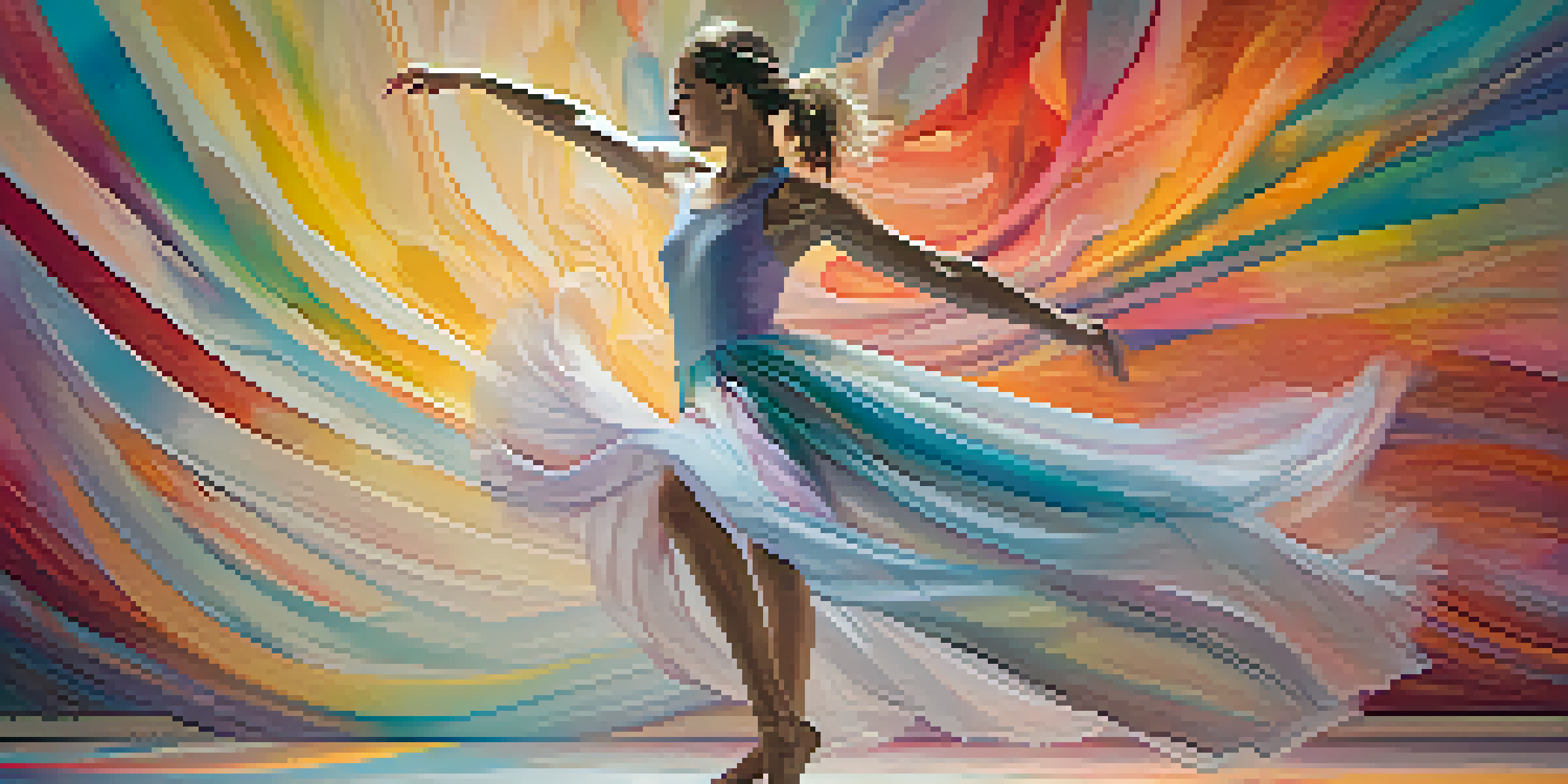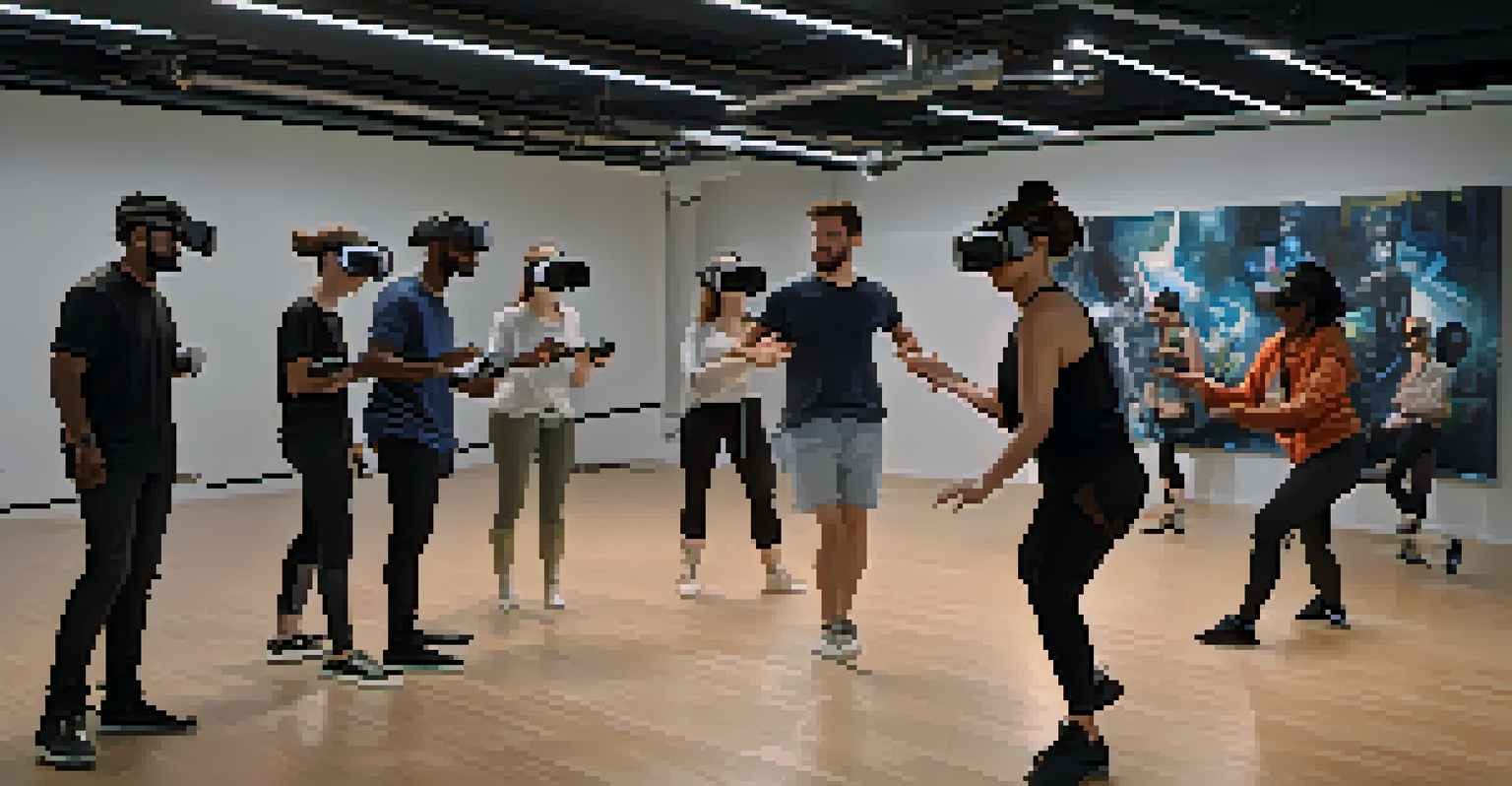The Impact of VR on Audience Engagement in Dance Performances

Understanding Virtual Reality in Dance
Virtual Reality (VR) is revolutionizing the way audiences experience dance. By immersing viewers in a 360-degree environment, VR allows them to feel like they are part of the performance. This transformative technology not only enhances the visual spectacle but also engages the audience's emotions on a deeper level.
The future of dance will be defined by the intersection of art and technology, where virtual reality allows us to experience performances in entirely new dimensions.
Imagine watching a dance performance from the front row, then instantly being transported to the dancers' perspective. This shift in viewpoint creates a more intimate experience, allowing audiences to connect with the choreography and the dancers in ways that traditional performances can't offer.
As VR technology continues to evolve, it opens up new possibilities for creative expression within dance. Choreographers can design experiences that go beyond the stage, inviting viewers into fantastical worlds that enhance the storytelling aspect of their work.
Enhancing Emotional Connection with Audiences
One of the most significant impacts of VR in dance is the emotional connection it fosters between performers and audiences. When viewers are placed in the midst of the action, they are more likely to resonate with the themes and emotions being portrayed. This heightened level of engagement can leave lasting impressions.

For instance, consider a performance that explores themes of love and loss. In a VR setting, audiences might feel the weight of a dancer's solitary movements, experiencing the narrative in a profoundly personal way. This deep connection often results in a more impactful overall experience.
VR Enhances Dance Experience
Virtual Reality immerses audiences in dance, creating a deeper emotional connection and allowing them to experience performances from unique perspectives.
Moreover, the ability to experience dance from different perspectives allows viewers to appreciate the nuances of movement and expression. This multifaceted engagement can lead to a more profound understanding of the art form, encouraging audiences to reflect on their feelings long after the performance ends.
Expanding Audience Reach with Virtual Experiences
One of the most exciting aspects of VR in dance is its ability to reach wider audiences. Traditional performances are often limited by geographical constraints, but VR breaks down these barriers. Now, people from all over the world can experience a dance performance without the need for travel.
Virtual reality is not just a tool for entertainment; it’s a bridge that connects diverse audiences to the beauty of dance, regardless of their physical location.
Imagine a dance company in New York City performing for an audience in rural India, all through the power of VR. This not only democratizes access to the arts but also allows for cross-cultural exchanges that enrich the dance community globally.
Additionally, VR can accommodate those who may not be able to attend live performances due to physical limitations or other constraints. By making dance more accessible, VR fosters a more inclusive environment where everyone can enjoy and appreciate the art form.
Innovative Collaborations Between Artists and Technologists
The integration of VR in dance has sparked innovative collaborations between artists and technologists. Dancers are now working alongside game developers and VR specialists to create immersive experiences that push the boundaries of traditional choreography. This fusion of art and technology enhances the creative process.
For example, some performances incorporate interactive elements, allowing viewers to influence the storyline or the choreography itself through their movements. This level of interactivity not only engages audiences but also empowers them to become co-creators in the artistic experience.
Wider Audience Accessibility
VR breaks geographical barriers, enabling people worldwide to enjoy dance performances, regardless of physical limitations or location.
Such collaborations are fostering a new genre of performance art that challenges conventional definitions of dance. As artists and technologists continue to experiment, we can expect more groundbreaking works that redefine how we engage with dance.
Creating New Opportunities for Educational Engagement
VR technology also presents new opportunities for educational engagement in dance. Dance institutions can implement VR as a teaching tool, allowing students to learn from performances and master techniques from the comfort of their homes. This innovative approach makes learning more accessible and engaging.
Imagine a dance student being able to analyze a world-renowned performance up close, observing the intricacies of movement and technique. Such immersive learning experiences can enhance their understanding of choreography and inspire them in their practice.
Moreover, educators can use VR to teach dance history and cultural significance, providing context that enhances appreciation for different styles. This blend of education and technology can cultivate a new generation of dance enthusiasts and practitioners.
Challenges of Implementing VR in Dance Performances
Despite its numerous benefits, implementing VR in dance performances does come with challenges. One major hurdle is the cost associated with creating high-quality VR experiences, which may not be feasible for all dance companies, especially smaller ones. This financial barrier can limit accessibility to this innovative technology.
Additionally, there can be a learning curve for both performers and audiences when it comes to adapting to VR. Dancers need to adjust to new methods of storytelling and movement that cater to a VR environment, while audiences must become accustomed to engaging with performances in a different way.
Innovative Collaborations Emerge
The fusion of dance and technology fosters new artistic collaborations, leading to immersive experiences that redefine traditional performance art.
It's also essential to ensure that the technology does not overshadow the art itself. Striking the right balance between innovative tech and the essence of dance is crucial to maintaining the integrity of the performance.
The Future of Dance and VR Integration
As we look to the future, the potential for VR in dance appears limitless. With ongoing advancements in technology, we can expect even more immersive experiences that could revolutionize how we perceive and appreciate dance. The integration of VR is likely to become a standard practice in the industry.
Future performances may incorporate artificial intelligence to create dynamic, responsive environments that adapt to audience reactions in real time. This could lead to entirely new forms of storytelling that allow for personalized experiences unique to each viewer.

Ultimately, the combination of VR and dance holds the promise of enriching the art form and expanding its reach. As the dance community embraces this technology, we can anticipate a more vibrant and engaging landscape for artists and audiences alike.